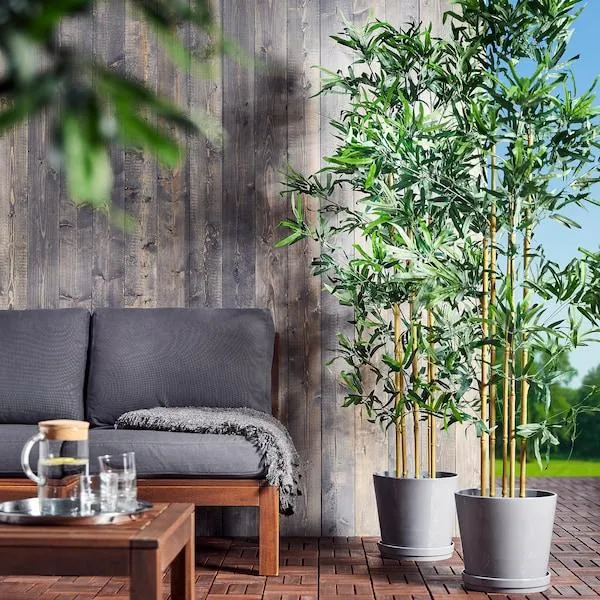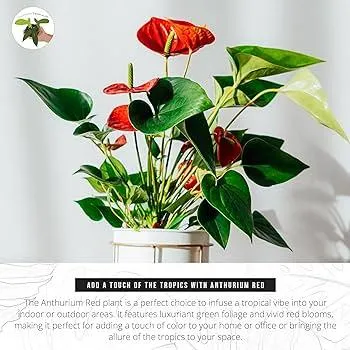The Best Large Live Plants for Your Living Room
If you’re looking to add some greenery to your living space but don’t want to limit yourself to just small potted plants, large live plants may be the answer. With the right choices, big foliage can really transform a room. In this article, I’ll discuss some of the top options for big live plants in your living room, along with tips for care and placement.
Low Light Tolerance
- Snake plant (Sansevieria trifasciata)
- Chinese evergreen (Aglaonema)
- Pothos (Epipremnum aureum)
These plants are great for living rooms since they can tolerate low light conditions near windows that don’t receive direct sunlight all day. Snake plants, in particular, are practically impossible to kill—I’ve seen them thriving in offices with fluorescent lights! Chinese evergreens and pothos can trail attractively down the sides of plant stands or bookshelves. They’ll add visual interest without needing much fuss.
Moderate Light Requirements
- Dracaena marginata
- Aralia
- Dieffenbachia
If your living space gets a decent amount of indirect light throughout the day, consider taller plants like dracaena, aralia, or dieffenbachia. From my experience, dracaena marginata is one of the most forgiving as its stems can be quite long, reaching 2-3 feet tall. Aralia and dieffenbachia foliage tends to be thicker and more substantial. Be sure to rotate these plants occasionally so all sides receive comparable light exposure.
Low Maintenance Needs
In addition to tolerating low light, the best large plants for living rooms are generally low maintenance. They don’t need constant fussing over or specialized care. Watering once every 1-2 weeks should suffice for most, depending on conditions. Living rooms also tend to be low humidity environments, so choose plants that can handle dry indoor air like snake plant, Chinese evergreen, dracaena or pothos rather than fussy tropicals.
Cleaning plant leaves occasionally also helps them perform photosynthesis efficiently. I usually wipe mine down with a damp cloth or use a spray bottle of water plus a few drops of dish soap. These low-effort techniques are plenty for most living room plants. Focus on maintenance that takes only a few minutes, not hours of babying!

Placement Considerations
Where you put a large plant is also critical. Evaluate light sources, vents, traffic flow, and potential hazards. Regarding light, south-facing windows are ideal, but east or west can work too with the right pan tolerance. Avoid placing in the direct path of an air vent or heater, as dry air can cause leaf drop. Make sure the area is not a high traffic pinch point. And obviously steer clear of placing toxic plants like dieffenbachia within easy reach of pets or young kids.
From my experience, plant stands are awesome for giving foliage height in a living space. Place them in corners, against walls, or grouped together for a jungle effect. Bookshelves and side tables can also work if the container isn’t too heavy. Just be sure the placement allows enough room for the plant to achieve its mature size without crowding other decor or blocking walkways. Proper positioning sets plants up for long-term success.
Pruning and Repotting
Beyond regular watering and occasional cleaning, large living room plants may need occasional pruning or repotting to stay healthy. Signs a plant needs repotting include sending out many new roots from the drainage holes, the roots circling the inside of the nursery pot extensively, or if the plant seems pot bound and isn’t growing well. It’s then time to transplant up to the next size terra cotta or plastic container.
Pruning may be necessary if a plant starts to look leggy, uneven or overgrown. I usually nip off stems right above a leaf node to encourage bushier regrowth. Most tolerate light trimming very well. Snake plant, for example, couldn’t care less if you chop several stems—it’ll still keep chugging along handsomely in the corner! moderate maintenance like repotting and pruning every year or two keeps plants looking their best.
Cleaning Leaves and Containers
Periodic cleaning is key for large houseplants that accumulate dust. I gently wipe leaves with a microfiber cloth or clean water in a spray bottle to remove debris. This allows for optimal gas exchange and photosynthesis. Containers also collect grime over time in living rooms. A quick exterior wash keeps them looking neat. For terra cotta, a light scrub with a soft brush and soapy water suffices. Plastic containers can be wiped down. Dry thoroughly before returning the plant to prevent mold growth. Little cleanings make a big difference visually!

Dealing with Pests
Unfortunately, pests can sometimes afflict large indoor plants too. The most common culprits are spider mites, scale, and mealybugs. Early signs include spotting fine webbing, yellowing or curled leaves, or fluffy white masses. If encountered, quarantine the plant immediately and inspect closely for signs of infestation. Fortunately, many natural remedies exist for treating common houseplant pests without harsh chemicals. I like making my own insecticidal soap or relying on neem oil—both are pretty effective in my experience. Removing visible pests by hand with an old toothbrush also helps control small problems before they spread. Keeping plants in good health minimizes pest risks.
Providing Support
Rather tall, leggy plants may also need staking or support as they mature to avoid toppling over. Bamboo or plastic plant stakes work well for dracaena, Dieffenbachia and other top-heavy plants. Simply insert the stake gently beside the main stem until stable. For trailing types, moss poles or trellises offer nodes for vines and stems to cling to as they cascade down. The right support allows large plants to achieve their natural shape while staying upright safely. It’s an easy project making use of common garden store materials.
Realistic Expectations
While low-effort to care for overall, remember that large live plants for living rooms are still living things requiring some TLC. They may drop the occasional leaf, especially if conditions change like a drop in light or watering inconsistencies. And retaining their size and appearance takes periodic maintenance tasks like repotting or pruning over several years. Be patient as new growth establishes. Most houseplants adapt easier than humans to new surroundings! With the right choices and reasonable care, big foliage can seriously up the style stakes of your living space for years to come.
In conclusion, selecting plants matching your light levels and maintenance abilities will set you up for success with big houseplants. Consider permanent or semi-permanent placement carefully. With minimal inputs like regular water, occasional cleaning, and addressing any issues early, generous greenery could be yours to enjoy for many visits on the couch. Living rooms with big leafy touches certainly create a sense of calm and nature’s peace amid our daily lives, in this writer’s experience. Does this help answer some questions about incorporating beautiful tall plants into your indoor space? Let me know if any other aspects need more explanation.
Top Large Indoor Houseplants for Living Rooms
| Plant | Size | Care Level | Traits |
|---|---|---|---|
| Dieffenbachia | 3-6 ft | Moderate | Variegated leaves, tolerates low light |
| Dracaena | 3-8 ft | Low | Striking canes, tolerates wide range of conditions |
| Ficus benjamina | 6-12 ft | Low | Graceful weeping form, air purifying |
| Philodendron | 6-10 ft | Low | Vining habit, durable and easy to care for |
| Chinese Evergreen | 3-6 ft | Low | Beautiful variegated or solid leaves |
FAQ
-
Can I put big plants in my living room?
Basically yeah, you totally can put big plants in your living room. As long as you have enough light coming in and space for the plant to grow, it should be fine. Just be careful about choosing plants that won’t get too humongous.

-
What kinds of big plants work well indoors?
Some good options for big indoor plants include ficuses, dracaenas, palm trees, and peace lilies. At the same time, philodendrons and pothos are kinda vines that will trail down and look great hanging from a shelf. Monstera deliciosa is kinda trendy right now too, with those big fenestrated leaves.
-
How much light do large houseplants need?
Most big plants need at least several hours of direct sunlight every day to stay healthy and keep growing. However, some types like philodendrons or snake plants can survive with less. It depends on the individual plant, so check care instructions. You might need to move plants closer to the brightest window in winter.
-
Do large plants need special care?
While care routines are similar to smaller plants, large specimens might need a bit more TLC. Watering amounts will increase as the plant grows. You may need to fertilize occasionally during growing seasons too. Staking or tying up tall types helps prevent snapping. Pothos vines especially love to climb! Overall, big plants are low maintenance if their conditions are met.
-
How do I choose a pot for a massive plant?
Go for a pot that’s only a few inches wider than the root ball. Overly huge pots can retain too much moisture and cause root rot. Terra cotta and plastic work well. Consider the pot style too – hanging plants maybe prefer macrame hangers over heavy ceramic! And think about if plants may outgrow pots eventually. Perhaps pick something you can repot into later if needed.
-
Will big indoor plants purify the air?
Some studies appear to show that certain large leaf houseplants do filter out volatile organic compounds and boost air quality to an extent. However, their pollution-scrubbing power may be less than expected. Strong air filters are still superior for serious issues. For casual home use though, plants seem kind of neat and maybe provide minor benefits!

